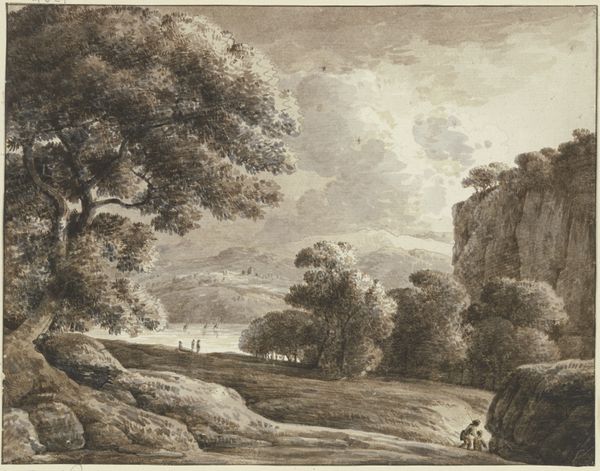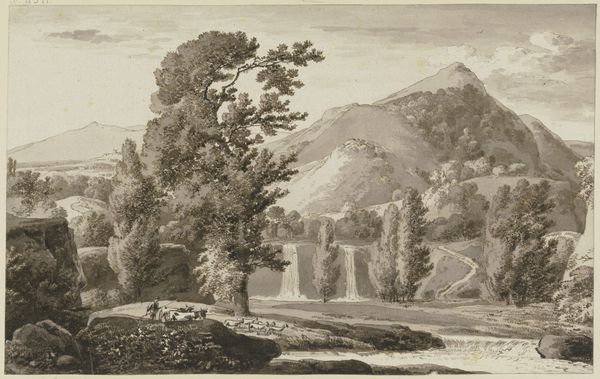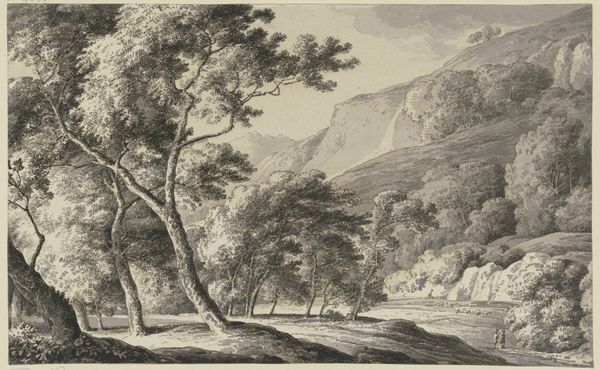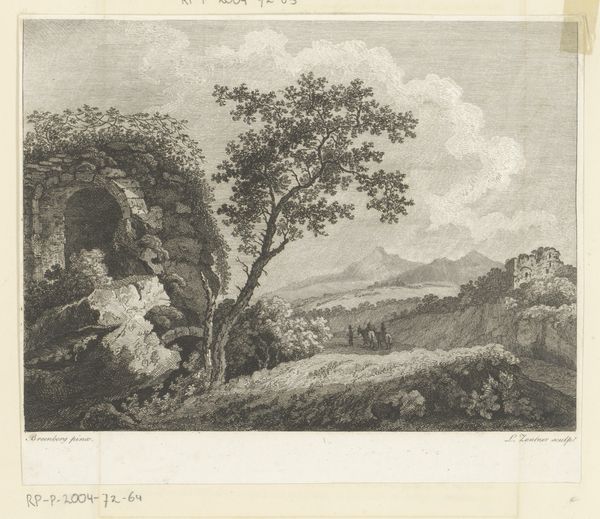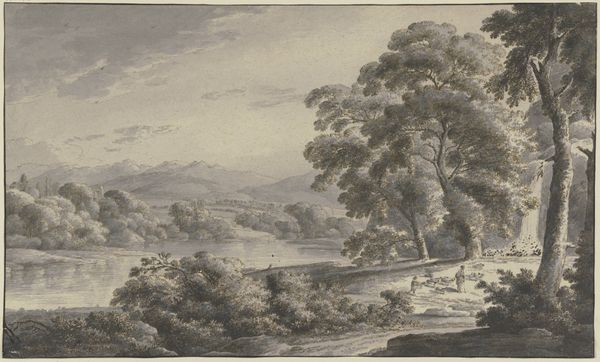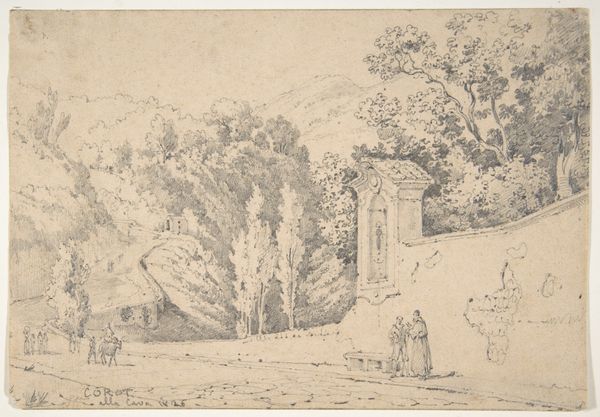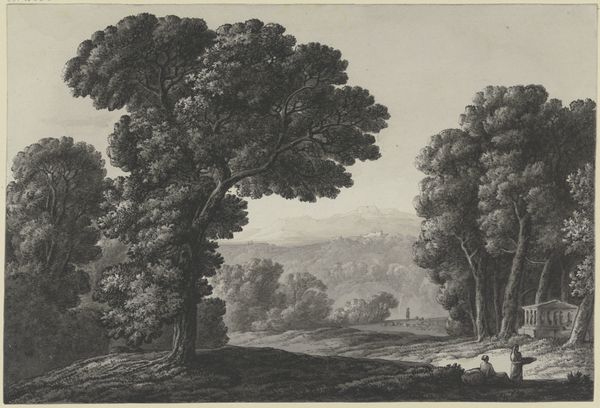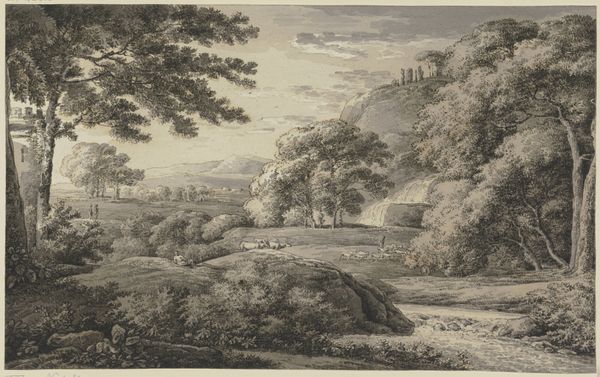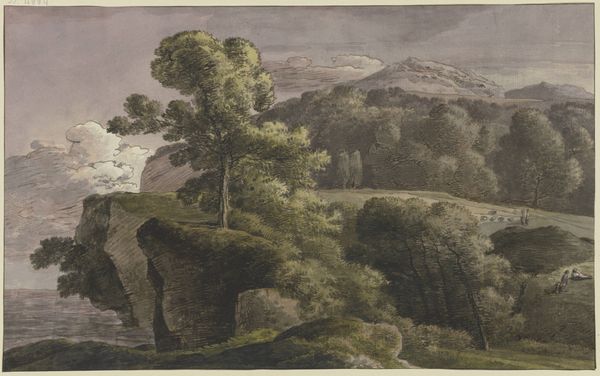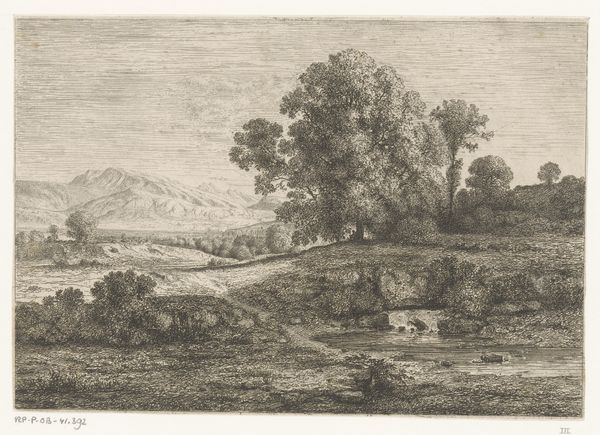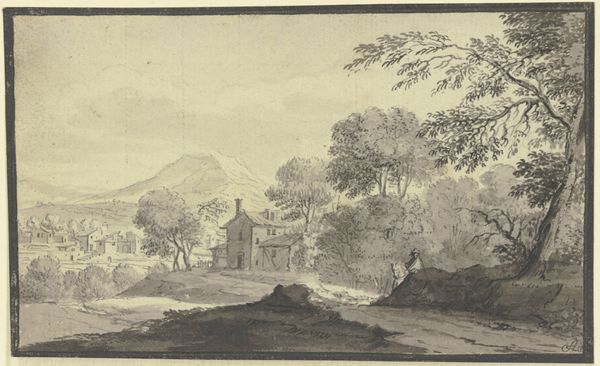
drawing, ink, pencil
#
pencil drawn
#
drawing
#
pencil sketch
#
landscape
#
charcoal drawing
#
ink
#
pencil drawing
#
romanticism
#
pencil
#
watercolor
Copyright: Public Domain
Editor: This is "Bergige Landschaft mit antiken Ruinen," or "Mountainous Landscape with Ancient Ruins," a drawing by Franz Kobell. The delicate lines of ink and pencil give the scene a slightly melancholic, almost ghostly feel. What strikes you about this piece? Curator: What interests me is how Kobell utilizes the *materials* at hand – primarily ink and pencil, likely readily available and relatively inexpensive – to depict both a romanticized past and a very real, lived-in landscape. The ruins become, in a way, commentary on the cycle of construction, labor, decay, and eventual consumption by the earth. Do you think the way he uses these common materials impacts how we view the ruins themselves? Editor: I hadn't considered that. Thinking about it, the choice of something as simple as pencil actually does seem to highlight the transience of even the most impressive structures, ancient or modern. Rather than seeing glorious marble, we see marks on paper, made by a human. Curator: Exactly. Consider the labor involved in extracting, shaping, and transporting marble for those ancient buildings versus the comparative ease of sketching them. The drawing process itself is a form of consumption and re-presentation. It democratizes the image of the ancient world, bringing it to a wider audience through relatively mass-producible images. How does knowing the materials influence how you perceive the subject matter? Editor: It makes the ancient world feel accessible, less about power and grandiosity, and more about people like us simply observing it. It's as if the very act of drawing bridges the gap between then and now. I learned a new perspective about landscape drawings today! Curator: I agree! I'll certainly be considering materiality differently when viewing this landscape again.
Comments
No comments
Be the first to comment and join the conversation on the ultimate creative platform.
